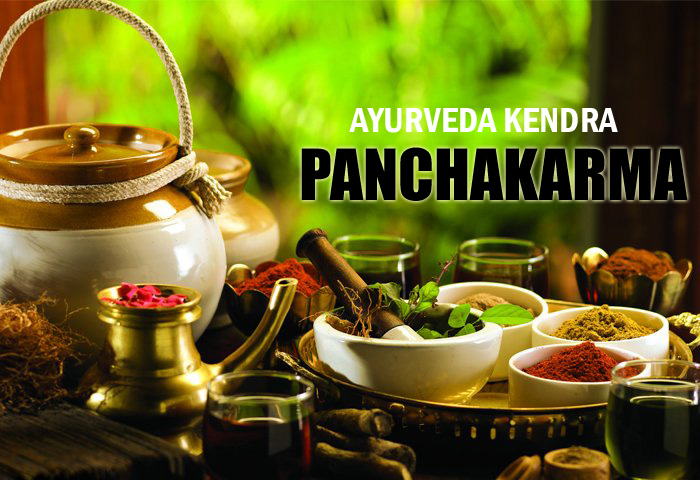
Rediscovering Health with Panchakarma: A Holistic Approach to Healing
In today’s fast-paced world, health has become a luxury that many of us cannot afford. Our hectic schedules often leave no room for self-care, leading to a host of physical and mental health issues. While modern medicine offers effective treatment for various ailments, they often come with side-effects and do not address the root cause of the problem. This is where Panchakarma comes in – a holistic approach to healing that has been practiced in India for centuries.
Panchakarma is a Sanskrit word that means “five actions” and involves a series of detoxification and rejuvenation treatments that aim to restore balance to the body and mind. It is based on the principles of Ayurveda, the ancient Indian system of medicine. Panchakarma not only treats the symptoms but also addresses the underlying causes of illnesses, making it a comprehensive approach to healthcare.
In this blog post, we will explore the various aspects of Panchakarma and how it can help you rediscover your
1. Understanding the Benefits of Panchakarma
Panchakarma is a powerful method of healing that has been used in Ayurvedic medicine for centuries. It is a holistic approach to healing that works on the physical, mental, and emotional levels to bring about balance and harmony in the body. The benefits of Panchakarma are numerous and include improved digestion, increased energy levels, better sleep, improved mental clarity, and enhanced overall well-being. Panchakarma is also effective in treating a variety of health conditions, such as arthritis, asthma, high blood pressure, diabetes, and chronic pain. By understanding the benefits of Panchakarma, individuals can rediscover their health and experience a renewed sense of vitality and wellness.
2. Examining the Five Elements
Examining the Five Elements is a crucial step in the Panchakarma process, as it helps us understand the underlying causes of our health imbalances. According to Ayurveda, the five elements of earth, water, fire, air, and ether combine to form three primary doshas – Vata, Pitta, and Kapha – which govern all bodily functions. By examining the qualities of each dosha and assessing their balance within the body, we can identify which dosha is out of balance and causing the health issue.
For example, an excess of Vata can cause dry skin, constipation, and anxiety, while an excess of Pitta can cause inflammation, acidity, and anger. Through careful examination and identification of the dominant dosha, we can tailor the Panchakarma treatment to restore balance and promote healing.
3. Personalized Diagnosis and Treatment
Personalized diagnosis and treatment is a key component of the Panchakarma approach to healing. With this approach, each individual’s unique constitution and health condition is taken into consideration to develop a customized treatment plan. This includes a comprehensive assessment of the individual’s physical and mental health, as well as their lifestyle habits and environmental factors. By gaining a deeper understanding of the individual’s specific health needs, the Panchakarma practitioner is able to design a treatment plan that addresses the root cause of their health issues rather than just treating the symptoms. This personalized approach ensures that each individual receives the most effective treatment for their unique health needs, leading to sustained and long-lasting health benefits.
4. Maintaining a Healthy Lifestyle
Maintaining a healthy lifestyle is an essential component of any holistic approach to healing, including Panchakarma. This includes a balanced diet, regular exercise, and stress management techniques such as meditation or yoga. It is important to prioritize self-care and take time for activities that promote physical, emotional, and mental well-being. Adequate sleep and hydration are also critical factors in maintaining a healthy lifestyle. Additionally, avoiding harmful substances such as tobacco and excessive alcohol can improve overall health and reduce the risk of chronic diseases. Incorporating these practices into daily life can support the body’s natural healing processes and promote long-term wellness.
5. Finding Balance through Holistic Healing
Holistic healing is an approach to healthcare that considers the whole person – body, mind, and spirit – in the pursuit of optimal health and wellness. Panchakarma, an ancient Ayurvedic therapy, is a prime example of a holistic approach to healing. At its core, Panchakarma seeks to restore balance and harmony to the body and mind by removing accumulated toxins and restoring the natural flow of energy.
Through a combination of diet, exercise, massage, and other techniques, Panchakarma can help individuals achieve a state of physical, emotional, and spiritual balance. In this way, Panchakarma offers a unique and powerful approach to health and healing that emphasizes the interconnectedness of all aspects of our being. By rediscovering health through Panchakarma, individuals can take a more holistic approach to their healthcare, leading to greater balance, vitality, and wellbeing.


Excellent Article, Excellent Blog , Excellent Site


This article has helped me understand Panchakarma better and its benefits. Thanks for this article.
The above Article is very good. keep sharing. Thanking you
Thank You for your expert advice on Panchakarma.It is really benefical those who are seeking help.